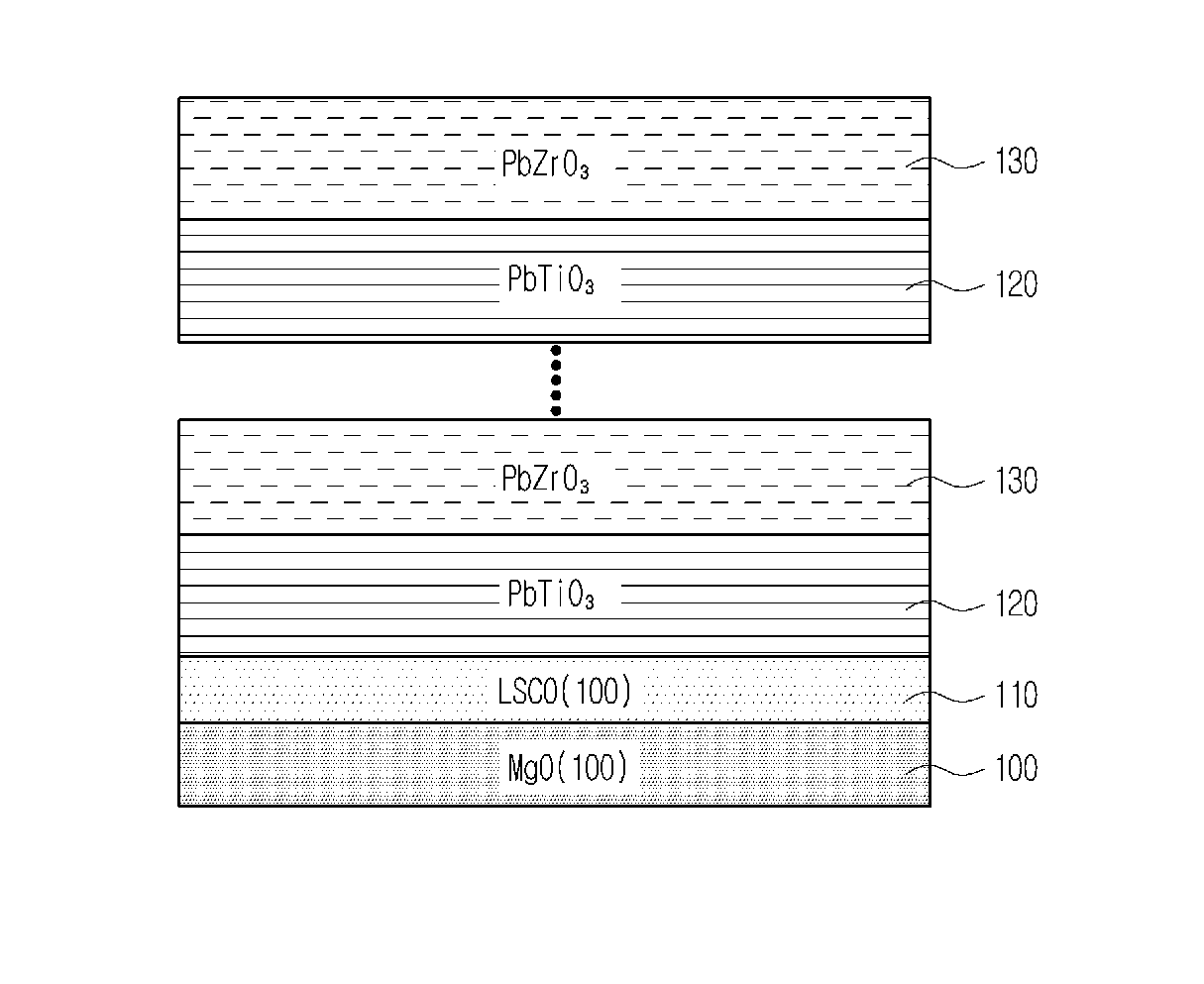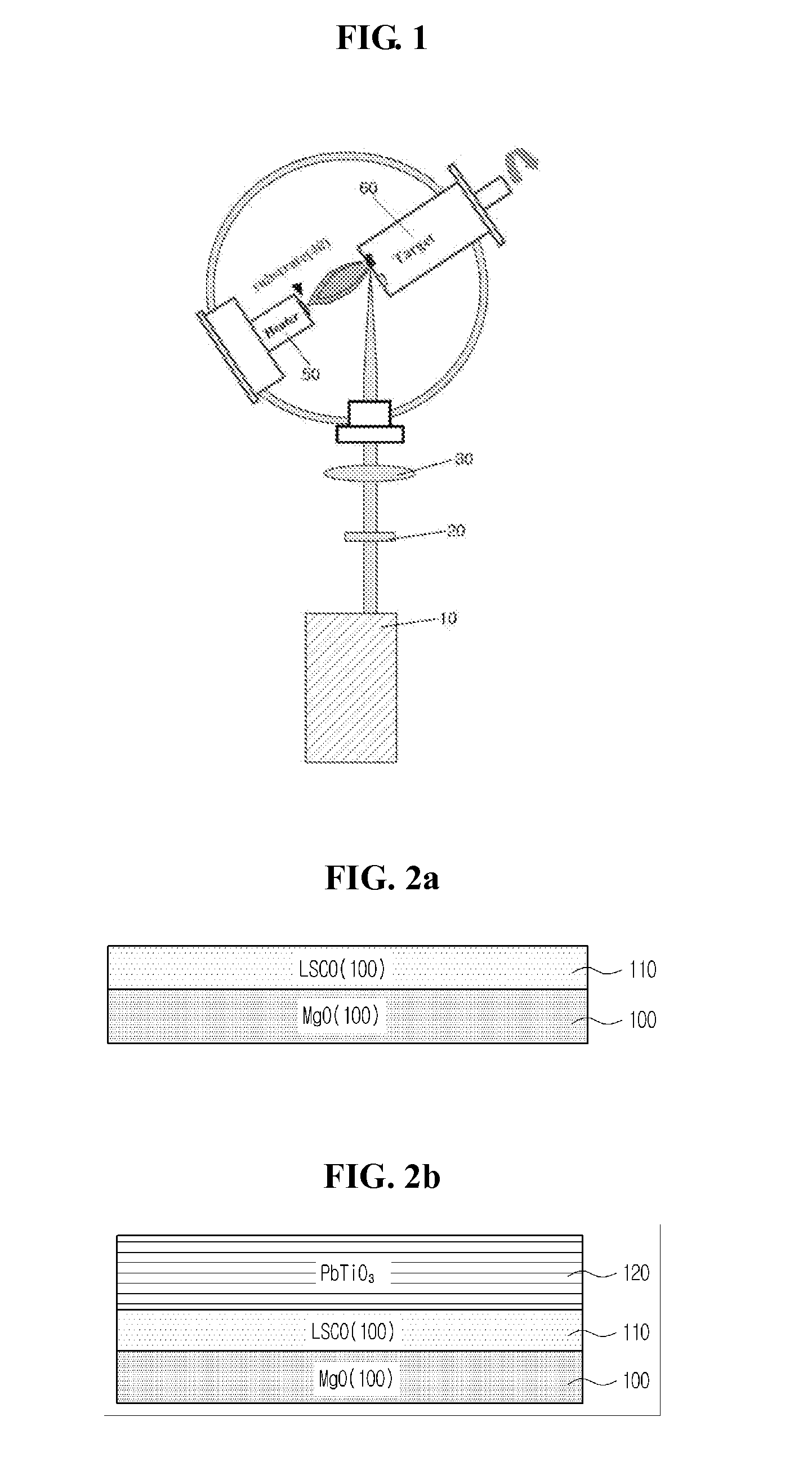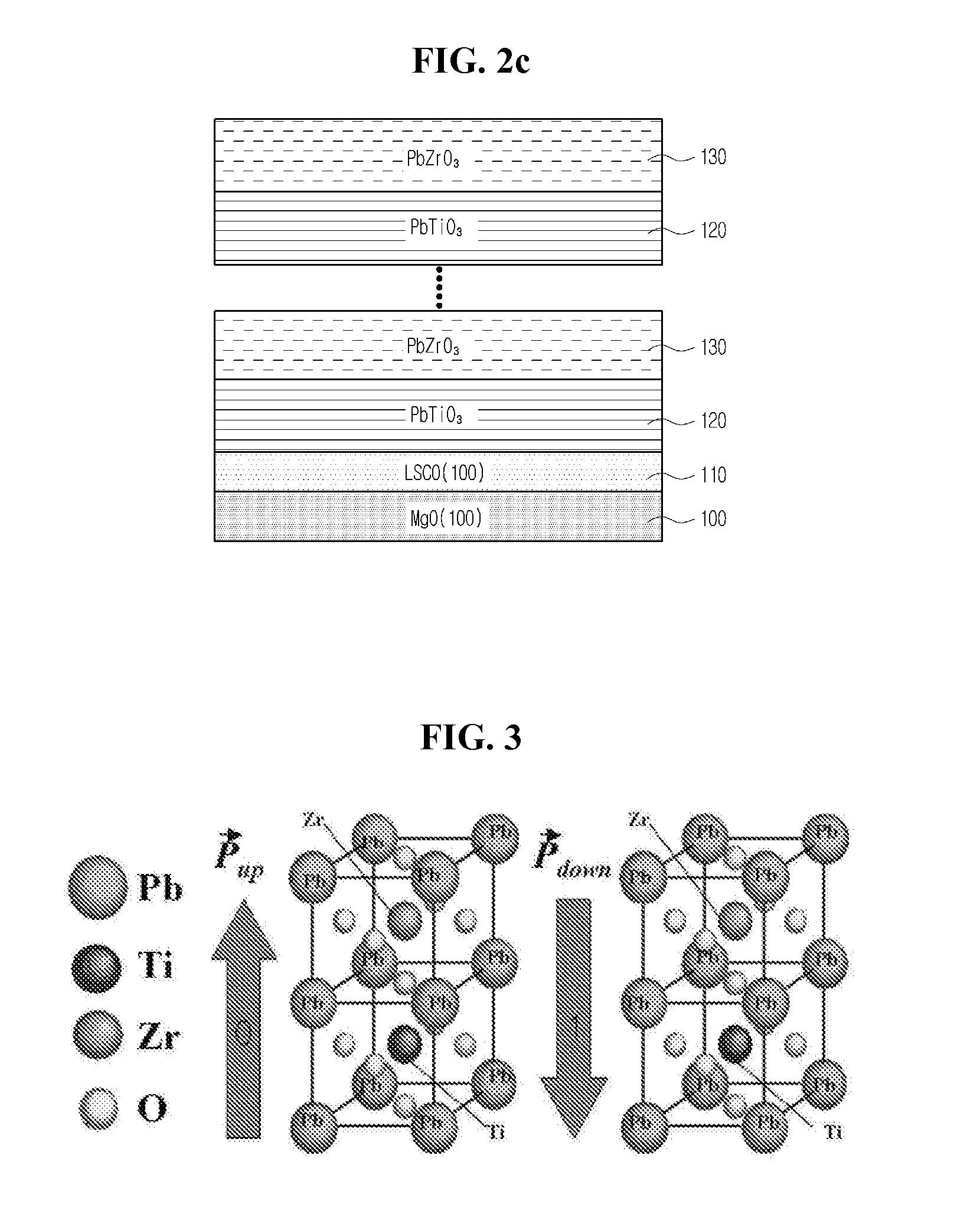Ferroelectric Oxide Artificial Lattice, Method For Fabricating The Same And Ferroelectric Storage Medium For Ultrahigh Density Data Storage Device
a technology of ferroelectric oxide and artificial lattice, which is applied in the direction of semiconductor devices, semiconductor device details, electrical apparatus, etc., can solve the problems of difficult to reach the data storage capacity of hard disks with high density integration, difficult to achieve the integration density, and difficult to miniaturize conventional hard disks. , to achieve the effect of high anisotropy
- Summary
- Abstract
- Description
- Claims
- Application Information
AI Technical Summary
Benefits of technology
Problems solved by technology
Method used
Image
Examples
Embodiment Construction
[0023] Hereinafter, the preferred embodiments according to the present invention will be described with reference to the accompanying drawings.
[0024]FIG. 1 is a schematic view of a Pulsed Laser Deposition (PLD) system used for forming a multi-layered oxide artificial lattice of ferroelectric thin film according to one embodiment of the present invention. Referring to FIG. 1, the PLD system comprises an excimer laser 10, an attenuator 20, a focusing lens 30, a target substrate 40 formed with a bottom electrode, and a heater 50. KrF gas is used as a laser source and the excimer laser is a COMPEX 205 excimer laser available from Lambda Physics Company which has a wavelength of 248 nm and generates 30 ns of pulse. PbZrO3 and PbTiO3 targets having 99.9% purity are used as the target 60. The attenuator 20 includes silica glass for controlling the laser energy. Then, the focusing lens 30 is adjusted so that the laser incident into a vacuum chamber has a size of 6 mm×1 mm at the target sub...
PUM
 Login to View More
Login to View More Abstract
Description
Claims
Application Information
 Login to View More
Login to View More - R&D
- Intellectual Property
- Life Sciences
- Materials
- Tech Scout
- Unparalleled Data Quality
- Higher Quality Content
- 60% Fewer Hallucinations
Browse by: Latest US Patents, China's latest patents, Technical Efficacy Thesaurus, Application Domain, Technology Topic, Popular Technical Reports.
© 2025 PatSnap. All rights reserved.Legal|Privacy policy|Modern Slavery Act Transparency Statement|Sitemap|About US| Contact US: help@patsnap.com



